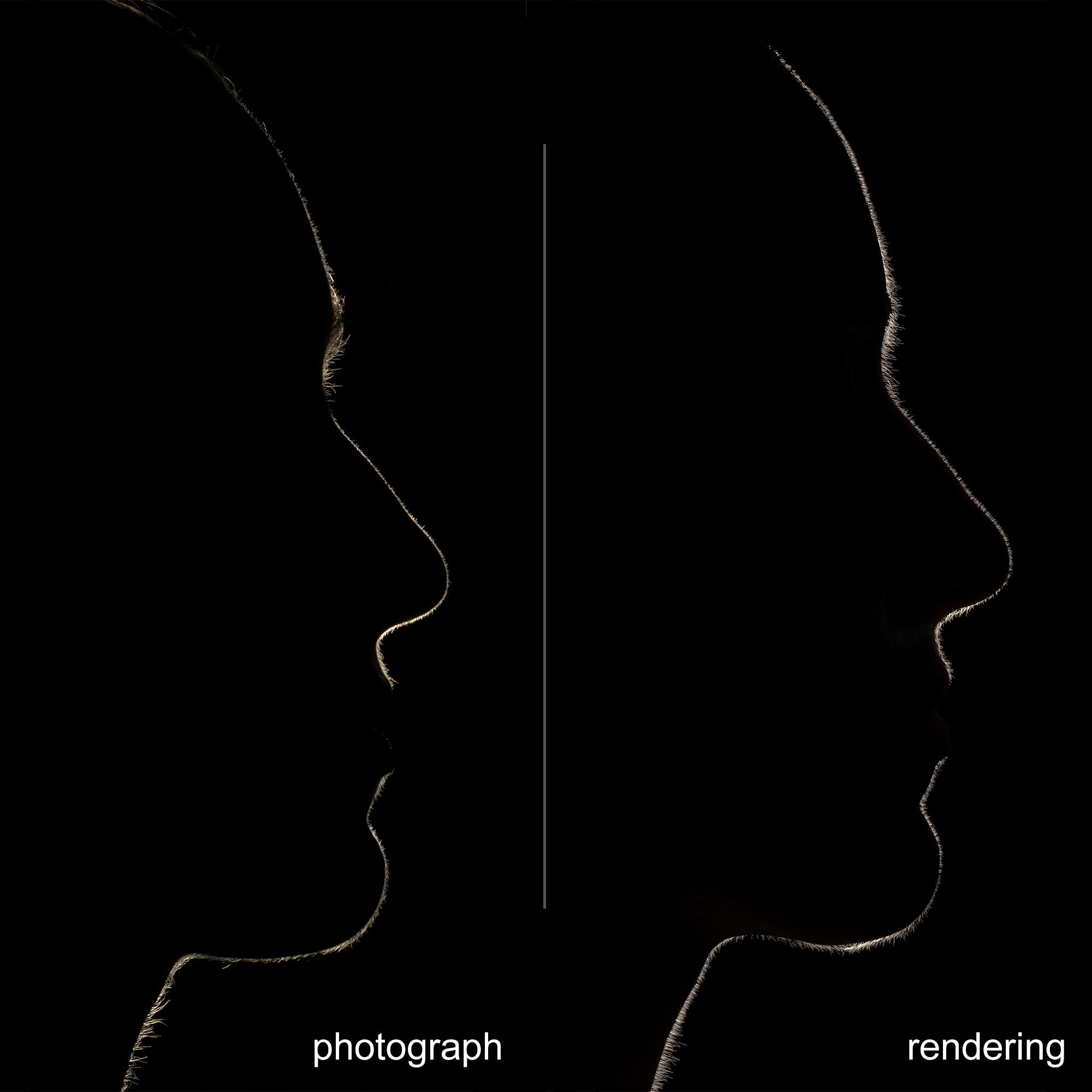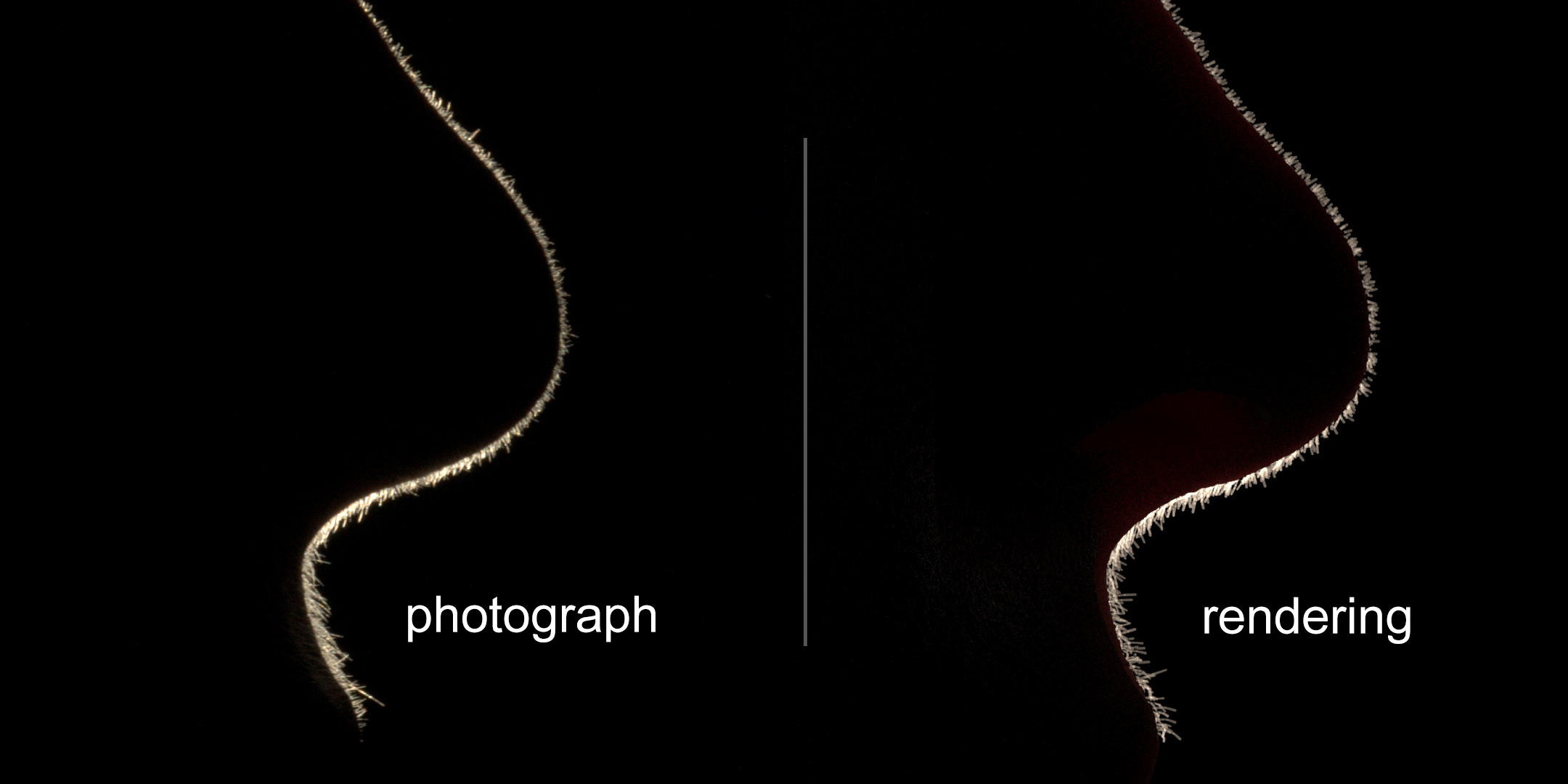Video renderings of three backlit subjects with vellus hair modeled using our approach and added to their 3D facial scans. (Best viewed at 4K resolution.)
We present a technique for modeling the vellus hair over the face ("peach fuzz") based on observations of asperity scattering along a subject's silhouette. We photograph the backlit subject in profile and three-quarters views with a high-resolution DSLR camera to observe the vellus hair on the side and front of the face and separately acquire a 3D scan of the face geometry and texture. We render a library of backlit vellus hair patch samples with different geometric parameters such as density, orientation, and curvature, and we compute image statistics for each set of parameters. We trace the silhouette contour in each face image and straighten the backlit hair silhouettes using image resampling. We compute image statistics for each section of the facial silhouette and determine which set of hair modeling parameters best matches the statistics. We then generate a complete set of vellus hairs for the face by interpolating and extrapolating the matched parameters over the skin. We add the modeled vellus hairs to the 3D facial scan and generate renderings under novel lighting conditions, generally matching the appearance of real photographs.

Comparing a backlit photograph of a subject (left) with a rendering under the same lighting condition (right). To create the rendering, vellus hair is modeled using our approach and added to a 3D facial scan. In both the photograph and the rendering, the hairs are visible due to asperity scattering along the silhouette.

A detailed inset of the nose: comparing a backlit photograph of a subject (left) with a rendering under the same lighting condition (right). Vellus hair is modeled using our approach and added to a 3D facial scan.

A detailed inset of the nose: comparing a frontlit flash photograph of a subject (left) with a rendering under a similar lighting condition (right). Vellus hair is modeled using our approach and added to a 3D facial scan.